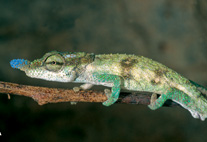Abstract
We describe the external morphology and oral cavity of the tadpoles of Bokermannohyla caramaschii and B. diamantina respectively from the states of Espírito Santo and Bahia, Brazil. Larvae of both species are distinguished from each other by external characters such as body shape, labial tooth-row formula, number of marginal papillae, coloration and internal oral anatomy features. Some of the character states of the tadpoles of B. caramaschii and B. diamantina that are shared with all other described tadpoles of the Bokermannohyla circumdata group, such as the absence/reduction of small flaps with accessory labial teeth laterally in the oral disc, and the absence/reduction of submarginal papillae, may represent morphological synapomorphies of this species group, or at least of some internal clade. The general pattern of brownish coloration with longitudinal stripes on the caudal muscle is also common to most species of the group. We did not find character states of the oral cavity that are exclusively shared by species of the B. circumdata group, or by other groups of Bokermannohyla.

